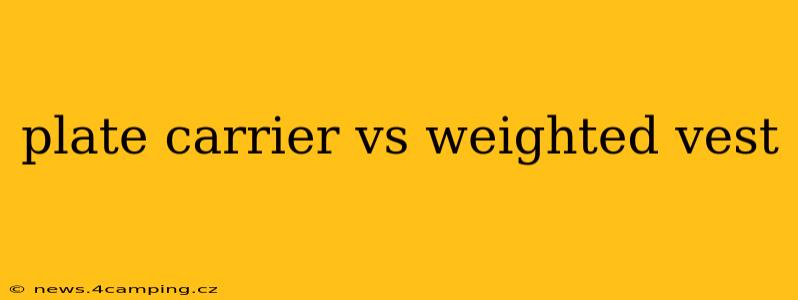Choosing between a plate carrier and a weighted vest depends heavily on your intended use. While both add weight for training purposes, their design, functionality, and overall application differ significantly. This guide will delve into the key distinctions to help you make an informed decision.
What is a Plate Carrier?
A plate carrier is a tactical vest designed to hold ballistic plates, providing protection from bullets and shrapnel. While some are designed for lightweight inserts for training, their primary purpose is ballistic protection. The weight distribution is often uneven, depending on the type and placement of the plates. They typically feature MOLLE webbing for attaching pouches and other accessories, making them highly customizable for various missions or training scenarios.
What is a Weighted Vest?
A weighted vest is primarily a fitness tool designed to increase resistance during workouts. The weight is typically evenly distributed, improving balance and providing a consistent load. They're simpler in design than plate carriers, lacking the features needed for ballistic protection or accessory attachments. Their main purpose is to enhance physical conditioning, boosting strength, endurance, and cardiovascular fitness.
Plate Carrier vs. Weighted Vest: Key Differences
| Feature | Plate Carrier | Weighted Vest |
|---|---|---|
| Primary Purpose | Ballistic protection; Training (some models) | Fitness training |
| Weight Distribution | Often uneven, dependent on plate type | Typically even |
| Weight Adjustability | Limited; determined by plate choice | Usually adjustable with weights or pockets |
| Material | Durable, ballistic-resistant materials | Varying materials; often nylon or canvas |
| Features | MOLLE webbing, cummerbund, plate pockets | Minimal features; simple weight system |
| Cost | Generally more expensive | Generally less expensive |
H2: What are the benefits of using a plate carrier for training?
Using a plate carrier for training offers several advantages, primarily for those in law enforcement, military, or other tactical professions. The weight simulates the load carried during operations, improving endurance and strength under realistic conditions. It also allows for practicing tactical movements and maneuvers while under load, enhancing operational readiness. However, it's crucial to start with lighter weights and gradually increase the load to avoid injury. Improper use can lead to back pain and other musculoskeletal problems.
H2: What are the benefits of using a weighted vest for training?
Weighted vests are beneficial for a broader range of fitness goals. They're suitable for various exercises, enhancing strength, endurance, and calorie burn. The even weight distribution promotes better balance and coordination. This makes them ideal for running, calisthenics, and other activities requiring consistent weight. The adjustability allows for progressive overload, allowing users to gradually increase the intensity of their workouts.
H2: Is a weighted vest good for tactical training?
While a weighted vest can add resistance during fitness training, it’s not a suitable replacement for a plate carrier in tactical training. A weighted vest lacks the features necessary for carrying essential equipment, and its even weight distribution doesn't accurately reflect the uneven weight distribution of tactical gear. For true tactical training mirroring real-world scenarios, a plate carrier (with training weights) is far more appropriate.
H2: Can I use a plate carrier without plates?
Yes, many plate carriers are designed to be used with or without plates. Some even come with included weight plates for training purposes. However, it's essential to ensure the carrier is designed for this and to be mindful of the weight distribution, as an empty plate carrier may still distribute weight unevenly.
Conclusion:
The choice between a plate carrier and a weighted vest hinges on your specific needs. For tactical training and real-world operational readiness, a plate carrier is essential. For general fitness improvement and broader training goals, a weighted vest offers a versatile and cost-effective solution. Always prioritize safety and proper technique regardless of the equipment you choose. Remember to start slowly and gradually increase the weight to avoid injury.
